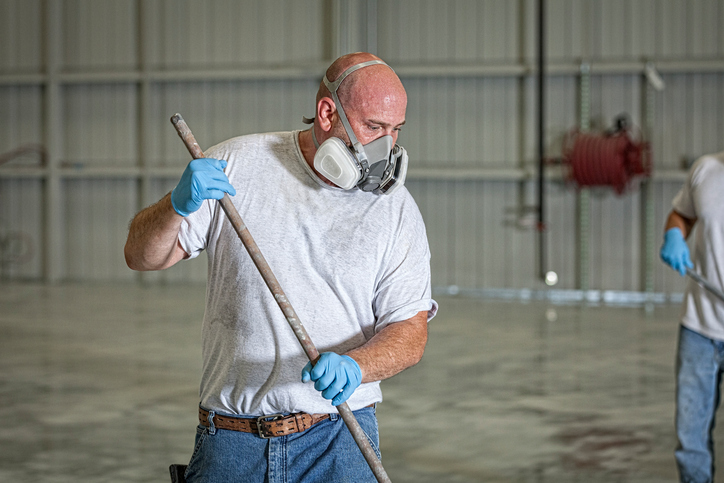Not all workplace health threats are readily apparent. Some hazards aren’t visible to the eye and others affect people internally. This is particularly true when it comes to respiratory issues, and it’s why workers need to fully understand the dangers around them to ensure their lungs remain healthy for decades to come.
Personal habits
Threats to lung health do not always directly come from the demands of a job itself. Instead, personal habits on the worksite can affect an individual’s health and even the health of coworkers. This reality is best exemplified by the use of tobacco products. Smoking puts people at risk of developing a host of diseases, including multiple forms of cancer, heart disease and chronic respiratory conditions. Despite the widely known health risks associated with smoking, tobacco products continue to be consumed by more than one billion people around the world.
Nicotine addiction is not a simple issue to resolve, especially in certain industries. There is a documented correlation between the prevalence of smoking and profession, and while smoking rates have certainly declined from peak use, it still remains a key risk for traditionally “blue-collar” positions. An evaluation of national health data shows smoking rates over 30% for blue-collar industries, and for construction workers the rates are even higher at 38.8%. This means construction workers are more likely to be smokers and consume cigarettes in higher amounts than the general public.
Employers can protect their workers by supporting programs aimed at reducing smoking and through proper engagement with employees. Educational programs and attempting to change the overall workplace culture may be the most effective tools available.
Toxic encounters on the job
Other threats to lung health arise from exposure to various chemicals and minerals that may be unavoidable in particular lines of work. Asbestos poses a substantial risk to employees in the construction and building maintenance professions. A study released in March 2017 by the Centers for Disease Control (CDC) found that in the present decade there are still deaths resulting from malignant mesothelioma, which is directly related to asbestos exposure:
The annual number of malignant mesothelioma deaths is increasing, particularly among persons aged ≥85 years, most likely representing exposure many years ago. However, although malignant mesothelioma deaths decreased in persons aged 35–64 years, the continuing occurrence of mesothelioma deaths among persons aged <55 years suggests ongoing occupational and environmental exposures to asbestos fibers and other causative EMPs, despite regulatory actions by the Occupational Safety and Health Administration (OSHA) and the Environmental Protection Agency aimed at limiting asbestos exposure.
This is likely due to the continued presence of asbestos-containing materials in the built environment, meaning any profession dealing with aging buildings and infrastructure is at an elevated risk for exposure. Asbestos was previously used in a wide array of building materials, such as insulation, tile, adhesives, and much more. Mesothelioma is only one of several diseases that can develop as a result of inhaling asbestos fibers. In fact, the World Health Organization estimates that 107,000 people die annually worldwide from occupational asbestos exposure. Grim statistics such as these serve as a continued reminder that past uses of asbestos are still a threat to human health.
Much of the same can be said about lead. This heavy metal was used during a similar time period and as ubiquitously as asbestos. Lead was commonly used as an ingredient in interior paint but it was also used in pipes and can still be found in older homes and buildings. The risk of encountering lead products falls on individuals working in aging buildings and those who deal with the disposal or recycling of those materials.
The Occupational Safety and Health Administration (OSHA) notes, “Lead exposure occurs in most industry sectors including construction, manufacturing, wholesale trade, transportation, remediation and even recreation.” OSHA estimates 838,000 construction workers are exposed to lead in the United States, in addition to 804,000 workers in other industries.
One of the primary pathways to occupational lead exposure occurs any time lead particles or dust is released into the air where it can be inhaled. Once in the lungs, lead may be absorbed into the bloodstream and travel throughout the body, damaging almost any organ. Some of the health consequences associated with lead exposure include neurological deficits, reduced kidney function, high blood pressure or, at very high levels of exposure, death.
Tiny airborne particles can be a severe detriment to lung health. This even applies to particles that are not inherently toxic. Exposure to dust, allergens, wood chips and smoke can cause acute respiratory reactions when inhaled. Particle size also dictates the extent of the damage, as smaller particles can lodge deeper into lung tissues and potentially enter the bloodstream. Particulate matter has been linked to a variety of respiratory and cardiovascular concerns, including asthma, heart attacks, or decreased lung function. Recent research has also linked particle pollution to the development of Alzheimer’s disease. Any profession that requires outdoor work, especially in areas known to have poor ambient air quality, is susceptible to risks associated with particle pollution.
Government agencies such as OSHA have developed guidelines for each of these toxins to ensure worker safety on the job. It’s important to make employees aware of the reasoning behind these regulations and the health protections they provide, which ideally will make the use of proper protective equipment and safety protocols more enforceable. It’s easy to take lung health for granted when so many other concerns often take precedence, but it’s an absolutely vital part of personal health.

